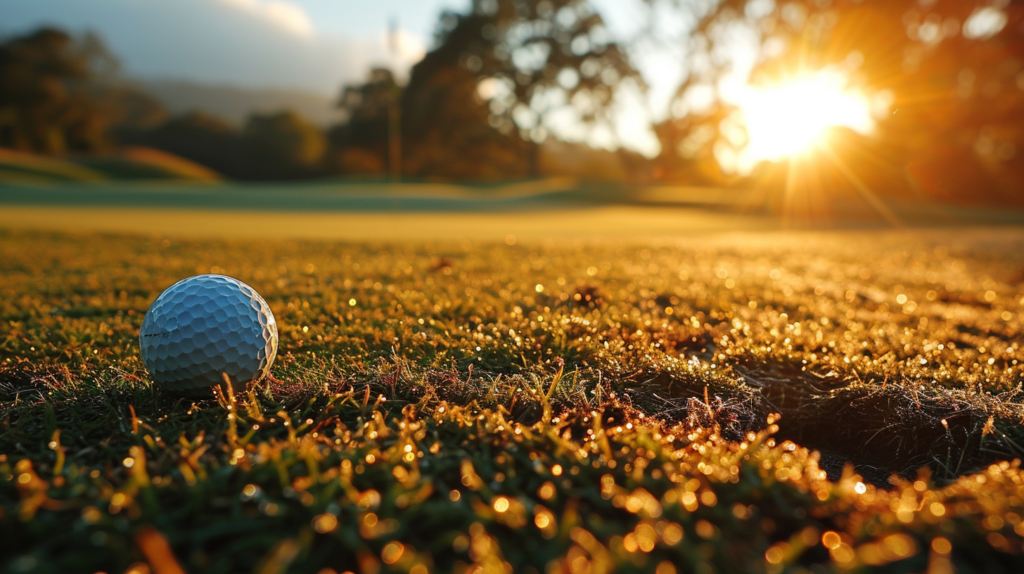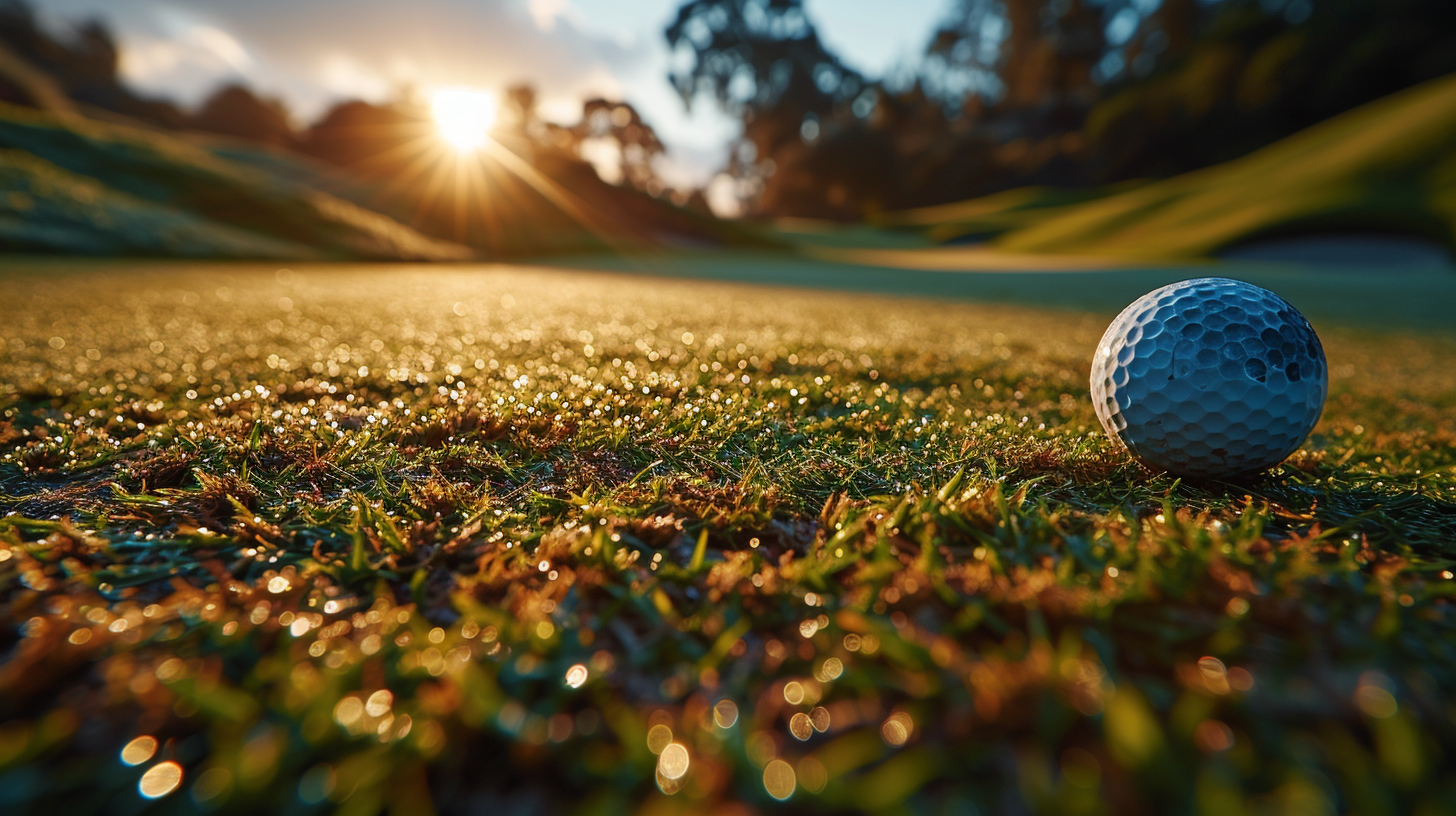Hitting greens in regulation is one of the most important skills in golf, but what exactly does that term mean?
Greens in regulation (GIR) measures the number of times a player reaches a green in the appropriate number of shots based on par, providing critical indication of scoring ability.
To understand how to improve this vital statistic, let’s dive in to examine what greens in regulation entail, how they are calculated, their scoring impact, and most importantly, tips to hit more greens!
What Are Greens in Regulation?

Greens in regulation (GIR) is a statistic that measures the number of times a player is able to hit the green with an approach shot and have their golf ball come to rest on the putting surface in regulation.
Specifically, greens in regulation refer to hitting the green with your first shot on a par 3 hole, hitting the green with your second shot on a par 4 hole, and hitting the green with your third shot on a par 5 hole.
The greens in regulation statistic is an important one for indicating the accuracy and consistency of a player’s iron play and approach shots. It shows how often they are getting on the putting surface in the appropriate number of strokes for the par of the hole.
The more greens a player can hit in regulation, the more birdie opportunities they will have and the better they will be able to score.
Why Greens in Regulation Matter

There are several reasons why greens in regulation is such a key statistic in the game of golf and indicates the quality of a player’s game.
First, greens in regulation give a strong measure of how accurately and consistently a player is hitting their mid to long irons and wedge shots into greens. Players able to hit a high percentage of greens with their approach shots gain more scoring chances.
By hitting greens in regulation, players are putting themselves in positions to have birdie putts and set up easy one putt pars. The closer the approach shot, the easier the putt.
And the more putts a player can take from within 15-20 feet because they hit the green, the more putts they are likely to make. This leads to lower scores over the course of a round or tournament.
Players who struggle hitting greens will have much longer birdie putts or tough up and downs that require getting up and down to save par.
In addition, there is a strong correlation between hitting greens in regulation and shooting low scores. Looking at stats on the PGA Tour, the players who rank highest in greens in regulation percentage also tend to be the ones that rank highest in scoring average.
Simply put, consistently landing approach shots on the green in regulation leads to more scoring opportunities and converts to lower scores.
How Greens in Regulation Are Calculated

Greens in regulation is calculated by taking the number of greens hit in regulation over a given round or rounds and dividing it by the number of GIR opportunities. What counts as official GIR opportunities are only par 3 holes as well as the par 4 and 5 holes during a round.
Only shots that land on the actual putting surface and come to rest there count as greens in regulation. Let’s break it down:
On par 3 holes, your tee shot is counted towards greens in regulation. If your tee shot on a par 3 lands on the green surface, that counts as a GIR.
For par 4 holes and par 5 holes, it is your second and third shots respectively that count for a potential GIR. To earn a GIR, your shot must land and remain on the actual putting surface.
If your ball lands on the fringes surrounding the greens or rolls off the back or to the side, that would not qualify as a GIR.
When calculating the percentage, you take the number of actual greens hit in regulation based on the criteria above and divide it by the number of total par 3s, 4s ad 5s played.
So if you hit 8 GIRs on a course with 10 par 3s, 4s and 5s, your GIR percentage would be 8/10 = 80%. The higher the percentage, the more greens were hit in regulation.
On tour, the average GIR percentage is around 70%. Most professional golfers hit between 65-75% GIR, with the leading players even reaching up to the mid 70 percentages. For amateurs, hitting 60% GIR is considered a good number to aim for.
What Makes a Good GIR Percentage

As previously mentioned, the best players in professional golf hit upwards of 70% of greens in regulation for a round or tournament. This requires supreme ball striking skills and consistent trajectory control with their mid and long irons as well as wedge play.
The professionals make hitting greens look easy. But in reality even 65% GIR is excellent for an amateur player.
On average most amateur golfers hit 50-55% of greens in regulation or less per round. For people who play and practice on a regular basis, hitting over 60% of greens in regulation in a round would be considered hitting a lot of quality shots.
Shooting under that 50% GIR number shows there is room for a lot of improvement on approach shots for the average player.
Even hitting over 50% of greens consistently can help amateurs and high handicaps start shooting lower scores by avoiding penalty strokes and gaining more legitimate birdie chances.
While the professionals have set the bar extremely high, the most important GIR number that indicates quality iron play for an amateur is being able to hit over half the greens successfully.
The best PGA Tour professionals rank near the top of the GIR percentage stats every year.
Players like Collin Morikawa, Webb Simpson, Justin Thomas and Rory McIlroy lead the PGA Tour by hitting over 70% of greens in regulation across all their rounds and tournaments played.
This allows them more birdie and scoring opportunities that translates into tournament wins and strong finishes.
Tips for Improving Greens in Regulation

Here are some helpful tips for golfers looking to increase their greens in regulation percentage and gain better scoring opportunities:
Focus on Ball Striking Consistency
The foundation for hitting more greens is pure ball striking with your irons and wedges so you can control distance effectively. Work on ball first contact, compressing the ball cleanly, and producing consistent launch angles for proper distance gaps between clubs.
Mastering ball striking leads to improved shot dispersion and trajectory control.
Practice All Types of Approach Shots from 100 Yards and In
Too often players only rehearse full swing shots at the range. Make time to hit all sorts of finesse wedge shots, pitches and chip shots in your practice sessions.
Controlled punch shots with longer irons. Higher softly landed wedge shots.
Knockdown shots into the wind. Being able to confidently execute all kinds of approach shots expands your ability to hit greens.
Develop an Effective Pre-Shot Routine
Implementing a consistent pre-shot routine prior to all iron and wedge shots establishes rhythm and focus. Get your alignment and distance calculated, visualize the shot shape and outcome then pull the trigger.
Your routine gets you centered and committed to hitting quality greens finding shots.
Track GIR Stats and Set Improvement Goals
Start recording your greens in regulation stats over several rounds to benchmark where you are currently at. Then you can set specific, measurable goals for improving your percentage over time.
If you are currently hitting 40% GIR, aim to get to 50%. Tracking stats makes you accountable.
Greens in regulation is a telling stat both for professionals competing for championships as well as amateurs and high handicaps looking to finally break 100, 90 or 80.
Focusing efforts on hitting more greens in regulation leads to more scoring opportunities, converts to lower scores and better performance.



